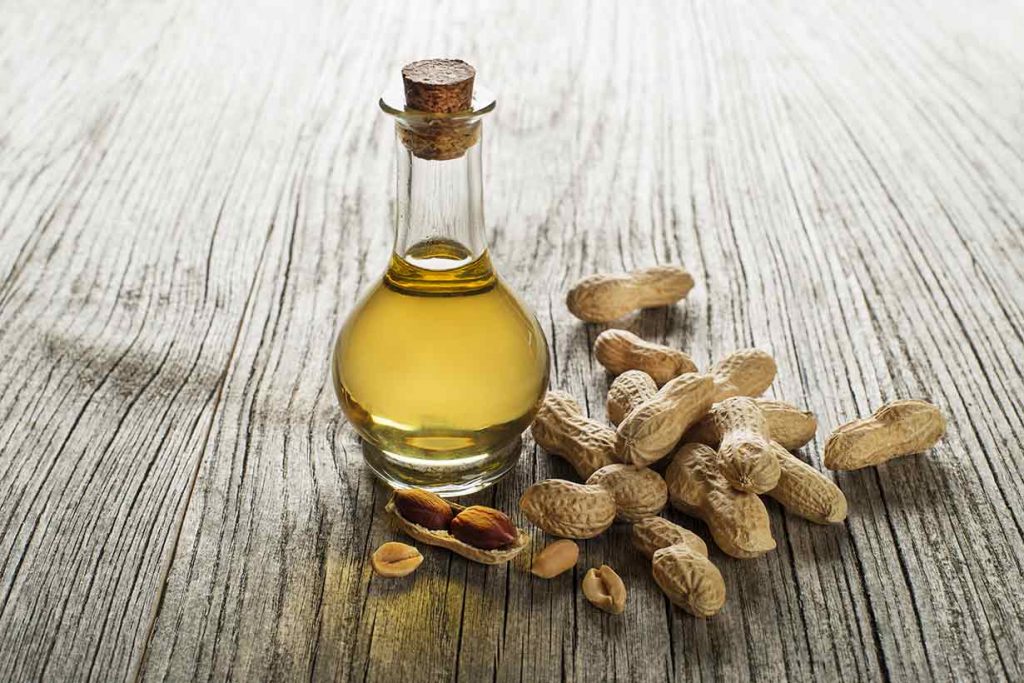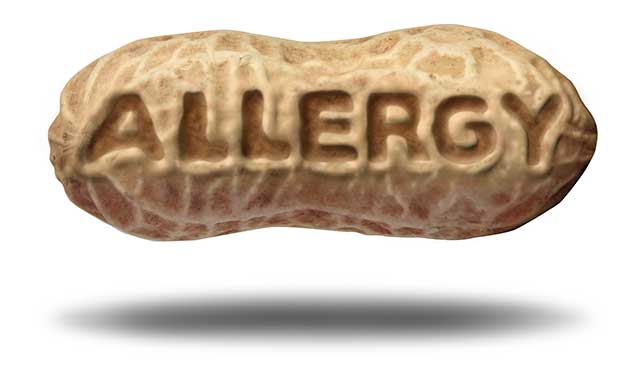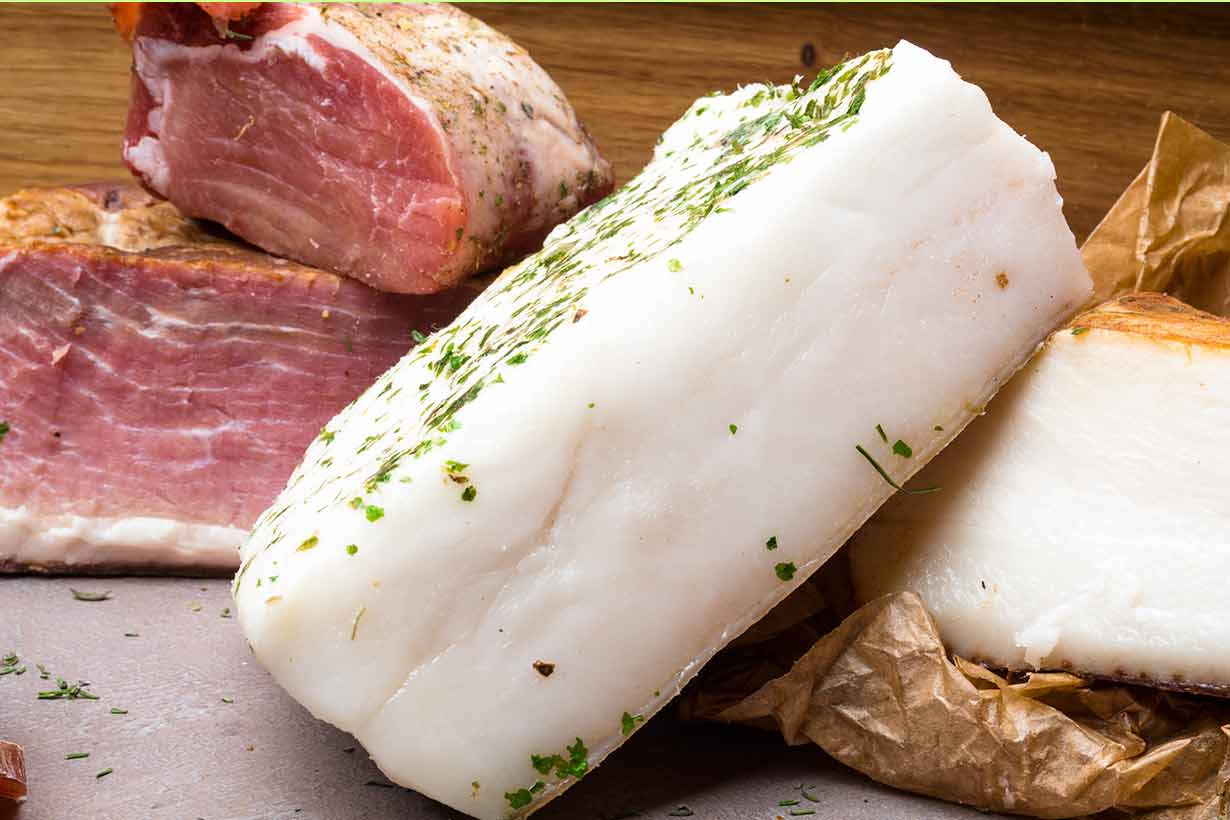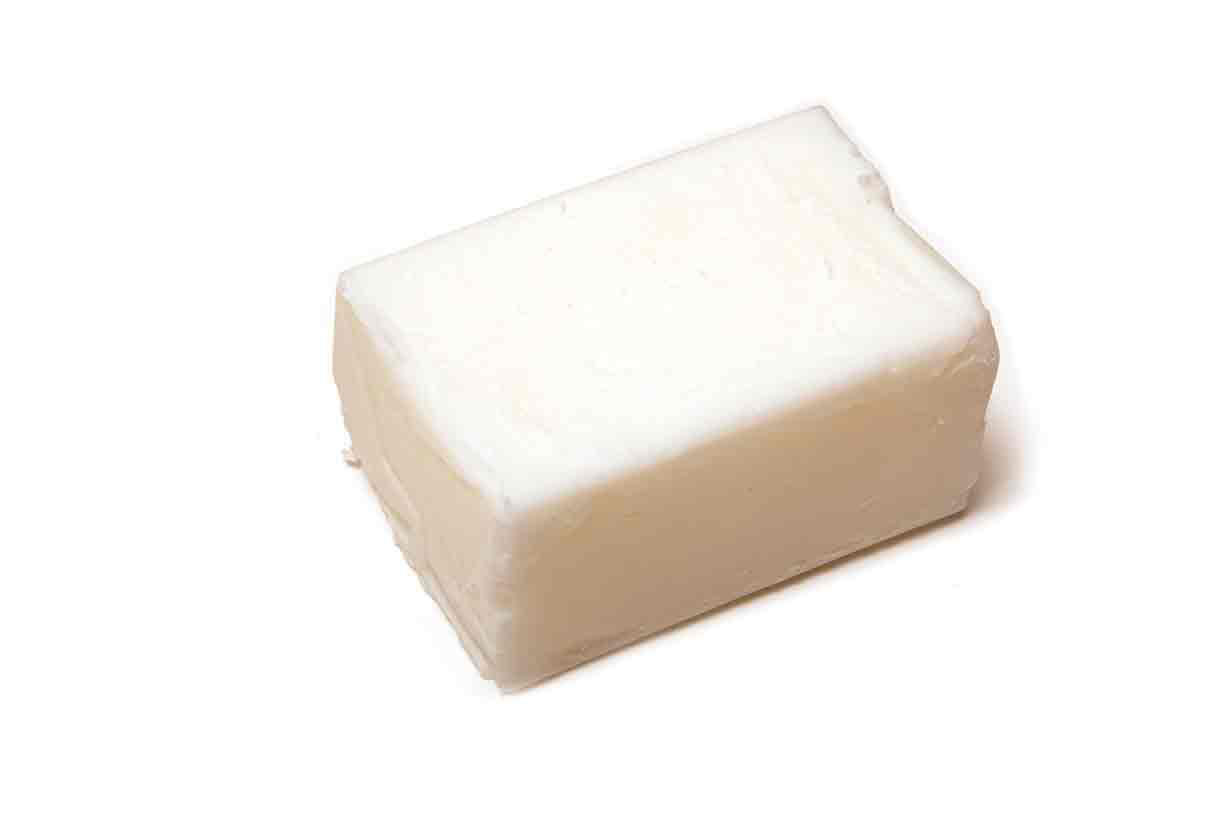Peanut oil has gained increasing popularity in recent years, and it is one of the few cooking oils that contribute a distinct flavor to food.
However, is frying with peanut oil a healthy option?
In this article, we’ll first examine the characteristics and nutritional properties of peanut oil.
Following this, we’ll explore the scientific research on its potential benefits and downsides.
Table of contents
What Is Peanut Oil?

Peanut oil refers to the oil obtained from isolating the fat content of peanuts from their solids.
Although peanut oil is classified as a type of “vegetable oil,” this classification is slightly misleading. For one thing, peanut oil is purely fat derived from peanuts, with no vegetables involved.
However, this is common, as many oils designated as ‘vegetable oil’ oil are made from fruits (olive oil), nuts (peanut oil), or seeds (sunflower oil).
Many people view peanut oil as one of the healthier cooking oil choices due to its high proportion of unsaturated fatty acids.
Types of Peanut Oil
There are several different types of peanut oil available, primarily differentiated by how they’re produced.
- Refined peanut oil: To make refined peanut oil, peanuts initially go through a high-pressure mechanical press to extract the oil. After pressing, producers add solvents such as hexane to the leftover peanut ‘meal’ to extract any remaining oil. The oil then undergoes evaporation, distillation, and condensation processes to remove solvents used in production (1). A bleaching and deodorization process follows, which removes impurities and improves the flavor, odor, and stability of the oil.
- Cold-pressed oil: Peanuts go through a mechanical press at a low temperature to extract the oil. Unrefined peanut oils retain much of their flavor and antioxidant properties from their natural phytonutrients.
- Roasted oil: some “premium” unrefined oils may also be roasted for additional flavor, known as ‘gourmet peanut oil.’ These oils have a flavor somewhat similar to sesame oil, and they are more flavorful than typical cooking oils.
Refined peanut oil has a higher smoke point (232°C / 450°F) than cold-pressed peanut oil (160°C / 332°F) (2).
Additionally, processing removes many of the components in peanut oil, including a large proportion of peanut (protein) allergens. As a result, the FDA exempts “highly refined peanut oils” from major food allergen labeling (3).
Note: the allergenic potential of peanut oil will be discussed in more detail later in this article.
On the other hand, unrefined and cold-pressed oils provide more flavor and contain higher amounts of phytonutrients, which can act as antioxidants and protect the oil from oxidation.
Key point: Peanut oil is a cooking oil high in monounsaturated fat, available in refined and cold-pressed varieties.
What is the Nutritional Profile of Peanut Oil?
The following table presents the nutritional values of peanut oil per 14-gram tablespoon (4).
| Nutrient | Amount | % Daily Value |
|---|---|---|
| Calories | 126 kcal | — |
| Carbohydrate | 0 g | 0% |
| Fiber | 0 g | 0% |
| Sugars | 0 g | — |
| Fat | 14.0 g | 18% |
| Saturated fat | 2.27 g | 11% |
| Monounsaturated fat | 7.99 g | — |
| Polyunsaturated fat | 2.79 g | — |
| Omega-3 | 0.05 g | — |
| Omega-6 | 2.76 g | — |
| Protein | 0 g | 0% |
| Cholesterol | 0 mg | 0% |
| Sodium | 0 mg | 0% |
As shown in the table, peanut oil is predominantly a source of monounsaturated fat.
The primary monounsaturated fatty acid in peanut oil is oleic acid, the same fatty acid often referred to as the “heart-healthy fat” in olive oil.
Additionally, peanut oil contains moderate amounts of polyunsaturated fat and a slightly smaller proportion of saturated fat.
Does It Contain Any Vitamins or Minerals?
A 14-gram tablespoon of peanut oil provides the following vitamins and minerals:
- Vitamin E: 2.13 mg (14% DV)
- Vitamin K: 0.6 mcg (<1% DV)
Key point: Peanut oil contains high amounts of monounsaturated fatty acids and provides a moderate amount of vitamin E.
Potential Benefits of Peanut Oil
1) High Oxidative Stability

Factors like heat, light, and oxygen can cause oxidation in cooking oils, leading to the formation of toxic byproducts such as polar compounds and depletion of natural antioxidants (5, 6).
The fatty acid profile of peanut oil plays a role in its oxidative stability, and the majority of its fatty acids are monounsaturated. The fatty acids in peanut oil are present in the following proportions (4):
- Saturated fat: 17.4%
- Monounsaturated fat: 61.2%
- Polyunsaturated fat: 21.4%
Generally, polyunsaturated fatty acids are the most prone to oxidation due to multiple double bonds in their structure, which react more easily with oxygen (7).
Cooking oils with a high polyunsaturated fat content are more prone to oxidation during prolonged exposure to high temperatures (8).
Since peanut oil contains a balance of fatty acids and is highest in monounsaturated fat, it is more stable than highly polyunsaturated oils.
Note: It is important to note that oxidation issues does not mean sources of polyunsaturated fat are “bad” for us. In this regard, a recent systematic review demonstrated that people with higher intakes of the polyunsaturated fat linoleic acid had a lower risk of all-cause mortality as well as mortality from cardiovascular disease and cancer (9).
Studies On the Oxidative Stability of Peanut Oil When Heated
Several studies have examined peanut oil’s oxidative stability.
- One study compared the oxidative stability of five vegetable oils (corn, grapeseed, rice bran, rapeseed, and peanut oil) (10). It found that peanut oil “underwent the slowest oxidation” during storage and—along with rapeseed oil—had the “highest oxidative stability” when heated.
- Another study published in 2018 analyzed the oxidative stability of ten cooking oils. In this study, peanut oil generated minimal oxidation products, ranking third in oxidative stability behind coconut oil and extra virgin olive oil (11).
- After six hours of frying at 180°C (356°F), peanut oil’s polar compound concentration was 10.71%, lower than canola, grapeseed oil, and sunflower oil but slightly higher than extra virgin olive oil and coconut oil
While highly saturated fats like coconut oil and animal fats have greater oxidative stability, diets high in saturated fat can raise LDL cholesterol levels. Elevated LDL-C is an established risk factor for cardiovascular disease (12).
Key point: Peanut oil displays better oxidative stability than many vegetable oils. However, research indicates that extra virgin olive oil and coconut oil perform better due to their specific antioxidant and fatty acid composition.
2) Contains Vitamin E
Vitamin E is an antioxidant that helps protect fatty acids from oxidation and neutralize free radicals.
For this reason, food manufacturers add it to many fat-containing foods, often listing it as tocopherol, which comes from its chemical name (13).
Vitamin E has a similar effect in the body, where it helps protect our cells from damage caused by free radicals (14).
Each tablespoon serving of peanut oil provides 14% of the recommended daily value for vitamin E (4, 15).
However, it is important to note that the refining process oils undergo results in a loss of vitamin E content (16). In this regard, unrefined (cold-pressed) peanut oils, as well as oils like extra virgin olive oil, offer higher levels of vitamin E.
Unrefined peanut oil may be more resistant to oxidation due to its higher vitamin E content and other compounds found in crude peanut oil.
Key point: Peanut oil contains vitamin E, which help prevent the oil’s oxidation during cooking. Vitamin E also protects the body’s cells from free radical-induced damage.
Potential Concerns

While peanut oil may seem like a reasonable cooking oil choice, there are a few concerns to consider.
Peanut Oil May Cause Allergic Reactions
Peanut allergies can be very serious, and they are the leading cause of fatal anaphylaxis (severe allergic reactions) in the United States (17).
Although the FDA states that refined peanut oil is not a concern for people with nut allergies, this is not the case for unrefined, cold-pressed oil (3).
Since unrefined peanut oils don’t undergo the same level of processing as refined oils do, they can still contain enough peanut allergens to trigger an allergic reaction (18).
According to a randomized controlled trial involving 60 participants with peanut allergies, no reactions were observed with refined peanut oil. However, six individuals (10%) had a reaction to the unrefined peanut oil (19).
For more information on this issue, the White Paper on Peanut Allergy published by the Peanut Institute may be worth reading.
Key point: Peanut oil may contain enough nut allergens to trigger an allergic reaction. This primarily applies to unrefined peanut oils, while highly refined peanut oils are unlikely to cause allergic reactions.
Deep-Fried Food Is Linked To Negative Health Outcomes
Recently, many restaurants and fast-food chains have advertised their use of peanut oil as though it is a healthier option.
It is true that peanut oil may be a better choice than typical fast-food oils if used for prolonged periods at high temperatures. This is due to its greater oxidative stability, thanks to its high monounsaturated fat content.
In terms of fatty acid composition, peanut oil is closer to high-oleic oils, which are designed for high-heat cooking, than to common seed oils.
High-oleic oils are varieties of oils, such as sunflower and soybean oil, developed to have higher levels of the monounsaturated fat oleic acid and lower levels of polyunsaturated fat. These oils are seen as better suited for high-temperature frying than oils high in polyunsaturated fat.
For more information, see this guide to high-OLEIC sunflower oil.
However, it is not just the oil that matters, but also how it is used.
For example, there is likely a difference between pan-frying food in peanut oil at home for 10 minutes and food cooked in an industrial fryer at high temperatures where the oil is changed after several hours.
It is also worth noting that the type of food being cooked in peanut oil largely determines the health properties of the overall meal. For instance, there is a significant difference between leafy greens sautéed in a teaspoon of peanut oil and a meal of deep-fried chicken and fries.
Moreover, most deep-fried food tends to be high in calories, and large observational studies link deep-fried food with an increased risk of all-cause mortality and cardiovascular diseases (20, 21, 22, 23).
It is important to note that correlation does not imply causation. Those who consume the most deep-fried foods may also have poorer diet quality or exercise less, for example. However, there are clear potential mechanisms for deep-fried food to have negative effects, such as its high-calorie density and oxidation issues.
Key point: Peanut oil is more stable than many vegetable oils, but research still links a frequent intake of deep-fried foods with increased risks of cardiovascular disease and all-cause mortality.
Is Peanut Oil a Healthy Cooking Oil?
So, how healthy is frying with peanut oil?
Studies directly comparing it to other cooking oils find that it provides better stability at high heat than many options.
However, there is a lack of research involving human participants to assess the impact of this on health outcomes.
Using small amounts of peanut oil for pan-frying and occasional deep-frying at home is likely fine, but minimizing the regular consumption of deep-fried foods—particularly when the oil is reused—would be sensible.
Overall, if you want a relatively affordable oil for deep frying, refined peanut oil is a good option. If you want an oil that is reasonably heat stable and adds a pleasant flavor to dishes, cold-pressed or roasted peanut oil might work well.








